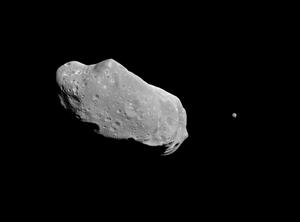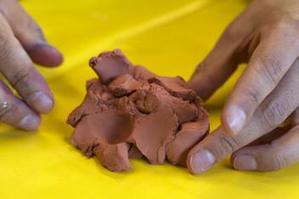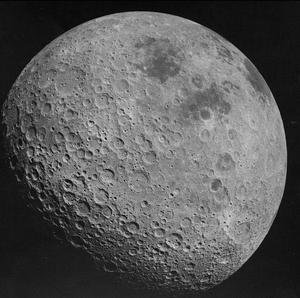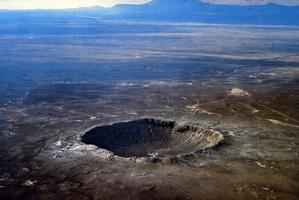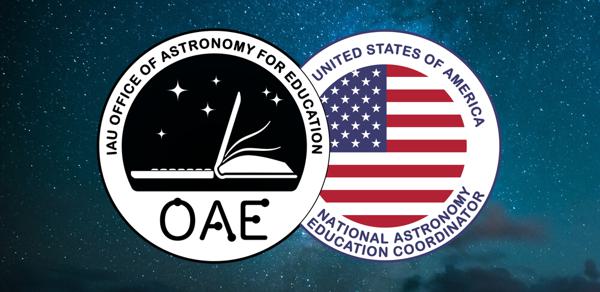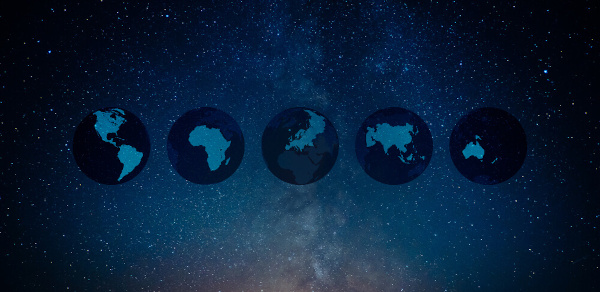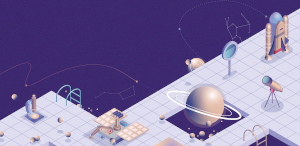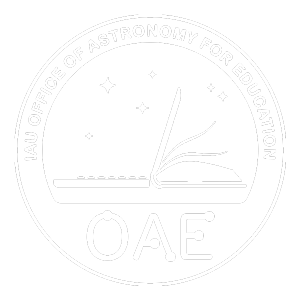Glossary term: Asteroide
Description: Un asteroide es un pequeño cuerpo que orbita alrededor del Sol o de otra estrella o remanente estelar. Los asteroides son cuerpos sólidos de distintas composiciones: algunos son ricos en carbono, otros contienen más material rocoso (silicatos) y otros están compuestos principalmente por metales.
La mayoría de los asteroides son montones de escombros unidos por la gravedad, con formas abultadas e irregulares. Algunos asteroides tienen lunas, otros pequeños asteroides que orbitan a su alrededor.
Los asteroides son más pequeños que los planetas enanos (que tienen masa suficiente para que la gravedad les dé una forma casi redonda). Su tamaño es mayor que el de los meteoroides; el límite inferior de un asteroide suele situarse entre uno y diez metros de diámetro. Si el calentamiento por el Sol o la estrella hace que el pequeño cuerpo emita gas y polvo, se trata de un cometa y no de un asteroide (aunque la distinción no siempre está clara).
Históricamente, se denominaba asteroide a todo cuerpo astronómico que orbitaba alrededor del Sol y que era demasiado pequeño para ser detectado con un telescopio. Al aparecer como puntos estrellados a través de un telescopio, recibieron el nombre de asteroides por la palabra griega que significa parecido a una estrella.
Related Terms:
- Cinturón de Asteroides
- Familia de Asteroides
- Cometary Coma
- Comet
- Cometary Tail
- Near-Earth Objects
- Solar System
- Trojans
- Small Solar System Body
See this term in other languages
Term and definition status: The original definition of this term in English have been approved by a research astronomer and a teacher The translation of this term and its definition is still awaiting approval
The OAE Multilingual Glossary is a project of the IAU Office of Astronomy for Education (OAE) in collaboration with the IAU Office of Astronomy Outreach (OAO). The terms and definitions were chosen, written and reviewed by a collective effort from the OAE, the OAE Centers and Nodes, the OAE National Astronomy Education Coordinators (NAECs) and other volunteers. You can find a full list of credits here. All glossary terms and their definitions are released under a Creative Commons CC BY-4.0 license and should be credited to "IAU OAE".
If you notice a factual or translation error in this glossary term or definition then please get in touch.
Related Media
Ida and Dactyl
Credit: NASA/JPL credit link
License: PD Public Domain icons
Related Activities
Creating Asteroids
astroEDU educational activity (links to astroEDU website) Description: Have fun, building asteroids using clay!
License: CC-BY-4.0 Creative Commons Reconocimiento 4.0 Internacional (CC BY 4.0) icons
Tags:
Hands-on
, Model
Age Ranges:
4-6
, 6-8
, 8-10
Education Level:
Pre-school
, Primary
Areas of Learning:
Modelling
, Social Research
Costs:
Medium Cost
Duration:
1 hour 30 mins
Group Size:
Group
Skills:
Communicating information
, Developing and using models
Impact Craters
astroEDU educational activity (links to astroEDU website) Description: A literal Earth-Shattering experiment
License: CC-BY-4.0 Creative Commons Reconocimiento 4.0 Internacional (CC BY 4.0) icons
Tags:
History
, Impact
, Experiment
Age Ranges:
10-12
, 12-14
, 14-16
Education Level:
Middle School
, Primary
, Secondary
Areas of Learning:
Guided-discovery learning
, Modelling
, Traditional Science Experiment
Costs:
Low Cost
Duration:
1 hour
Group Size:
Group
Skills:
Analysing and interpreting data
, Asking questions
, Constructing explanations
, Engaging in argument from evidence
, Using mathematics and computational thinking
Meteoroids, Meteors and Meteorites
astroEDU educational activity (links to astroEDU website) Description: Unveiling the mystery of "shooting stars": meteors, meteorites and meteroids
License: CC-BY-4.0 Creative Commons Reconocimiento 4.0 Internacional (CC BY 4.0) icons
Tags:
Geology
Age Ranges:
6-8
, 8-10
, 10-12
, 12-14
Education Level:
Middle School
, Primary
Areas of Learning:
Interactive Lecture
Costs:
Low Cost
Duration:
1 hour 30 mins
Group Size:
Group
Skills:
Analysing and interpreting data
, Asking questions
, Communicating information
, Engaging in argument from evidence
